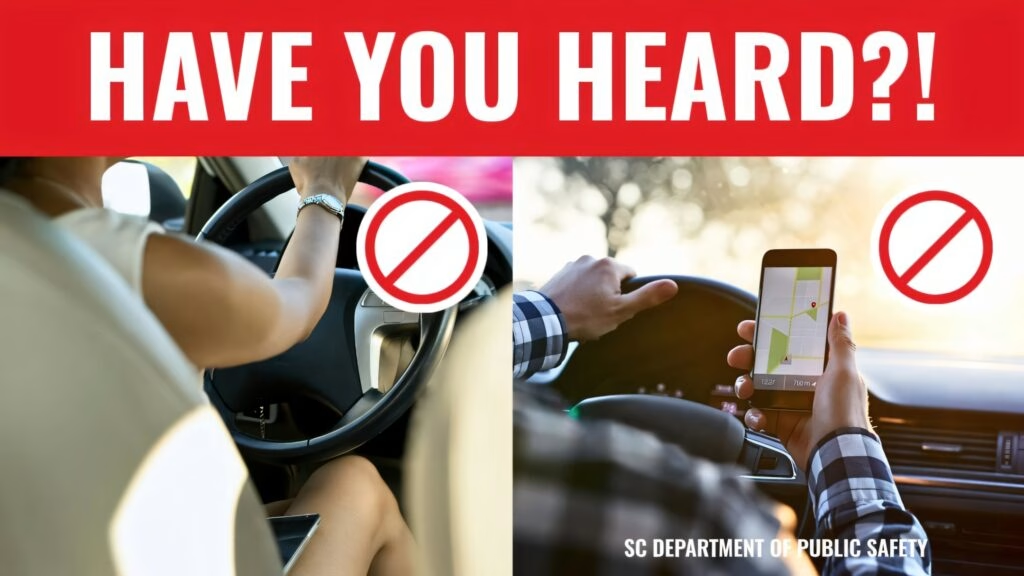Why Is South Carolina Cracking Down on Distracted Driving Right Now?
South Carolina’s highways have always carried their share of risk, but recent events have pushed road safety to the forefront. In just one month, three state troopers were injured or killed while working roadside incidents. The tragic death of First Class Trooper Dennis D. Ricks—the first South Carolina trooper to die in the line of duty since 2017—hit especially hard. For law enforcement, these aren’t just statistics. They’re colleagues, friends, and family members.
That’s why the state has launched Operation Keep Us Safe, a weeklong campaign that brings together the Department of Public Safety, Highway Patrol, and all 46 county law enforcement agencies. Their mission? To target two of the most persistent threats on the road: distracted driving and failure to slow down or move over for stopped vehicles.
What’s Behind the New Enforcement Push?
It’s easy to get numb to the warnings about distracted driving, but for South Carolina troopers, the danger is personal and immediate. Colonel Christopher Williamson, Commander for Highway Patrol, put it bluntly: “Enough is enough.” He’s seen firsthand how a moment’s inattention can change lives forever. One trooper recalled being sideswiped by an impaired truck driver while assisting a motorist. The risk is real every time someone steps out onto the shoulder.
Despite laws requiring drivers to slow down and move over for flashing lights—rules that have been on the books since 1996—compliance remains spotty. The hands-free law, which just took effect in September, is another step to address the growing problem of drivers glued to their phones. The state’s message is clear: these aren’t just guidelines. They’re lifesaving measures.
What Do South Carolina’s Hands-Free and Move Over Laws Actually Require?
Let’s break it down. The slow-down, move-over law means that if you see emergency vehicles, tow trucks, or any vehicle with flashing lights on the roadside, you’re required to change lanes away from them if it’s safe—or at least slow down significantly. Ignore it, and you could be facing a misdemeanor charge and a fine ranging from $300 to $500.
The hands-free law is even more straightforward: no holding or supporting a phone or electronic device while driving. That means no texting, no scrolling, not even holding your phone for GPS while moving. For now, officers are issuing warnings during a 180-day grace period, but after that, fines start at $100 and can climb to $200, with license points for repeat offenders.
How Will Operation Keep Us Safe Affect Everyday Drivers?
Right now, drivers caught violating these laws will likely get a warning. But don’t get too comfortable—once the grace period ends, fines will be enforced. And they’re not small change. The maximum penalty for distracted driving violations can reach $500, a hefty sum for a moment’s lapse in judgment.
Law enforcement isn’t just looking to hand out tickets. Their goal is to change behavior. According to the National Highway Traffic Safety Administration, distracted driving claimed over 3,500 lives in the U.S. in 2022 alone. South Carolina’s own data shows that distracted driving is a leading cause of crashes statewide. The hope is that increased enforcement, combined with public awareness, will make drivers think twice before reaching for their phones or ignoring roadside workers.
Why Are These Laws So Important for Roadside Safety?
If you’ve ever had to change a tire on the shoulder or wait for a tow truck, you know how vulnerable you feel with cars whizzing by. For first responders, that’s a daily reality. The move-over law is designed to give them a buffer—a little extra space to do their jobs safely. But it only works if drivers actually follow it.
The hands-free law addresses a different but equally dangerous threat. Studies from the AAA Foundation for Traffic Safety show that taking your eyes off the road for just two seconds doubles your risk of a crash. And let’s be honest: most of us underestimate how distracting a quick glance at a text can be. The law is about removing temptation and making our roads safer for everyone.
What Can Drivers Do to Stay Compliant—and Safe?
It’s not rocket science, but it does require a shift in habits. Start by putting your phone out of reach before you drive. If you need GPS, use a dashboard mount and set your destination before you hit the road. Get in the habit of scanning ahead for flashing lights and moving over early, not at the last second. And if you see someone on the shoulder—even if it’s not an emergency vehicle—give them as much space as you can.
For parents, it’s a great time to talk with teen drivers about the new rules. Teens are among the most at-risk for distracted driving crashes, according to the CDC. Modeling good habits and having honest conversations can make a real difference.
What’s the Real Impact of These Laws on South Carolina’s Roads?
It’s tempting to see new traffic laws as just another hassle, but the data tells a different story. States that have enacted strict hands-free and move-over laws have seen significant reductions in roadside injuries and fatalities. For example, after Georgia implemented its hands-free law, distracted driving crashes dropped by nearly 20% in the first year, according to the Georgia Department of Transportation.
South Carolina is hoping for similar results. The combination of public education, visible enforcement, and meaningful penalties is a proven formula for changing driver behavior. And while no law can eliminate risk entirely, every step toward safer roads is a win for everyone who uses them.
The big takeaway? Road safety isn’t about perfection—it’s about smarter adjustments. Start with one change this week, and you’ll likely spot the difference by month’s end.

